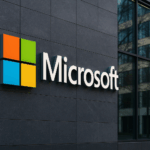Artificial intelligence and data analytics are changing how technology companies manage public relations, creating new challenges and opportunities. As businesses increasingly rely on digital tools to shape narratives, PR professionals must adapt to an environment where media sentiment can shift rapidly. Companies such as OpenAI, Microsoft (NASDAQ:MSFT), and Google (NASDAQ:GOOGL) face growing scrutiny over AI developments, requiring more sophisticated communication strategies. The balance between innovation and ethical concerns is now a crucial aspect of tech PR, influencing public perception and regulatory decisions worldwide.
AI-driven PR tools have existed for years, but their adoption has accelerated in recent times. Companies previously relied on traditional press releases, reactive crisis management, and manual media monitoring. Now, platforms using natural language processing and machine learning enable brands to assess public sentiment in real time. Microsoft and IBM utilize AI to predict trends and optimize press release timing, a shift from earlier reliance on human analysts. The increasing integration of automated tools reflects a broader trend in communication strategies across industries.
How are companies leveraging AI in PR?
AI-powered tools now assist PR teams in analyzing media coverage, anticipating potential crises, and personalizing messaging. Microsoft employs natural language processing to track social media conversations, while IBM uses AI analytics to determine optimal media outreach strategies. A report from Cision states that 78% of PR professionals now incorporate AI into their workflows. These tools help companies refine their messaging and respond quickly to emerging narratives.
What role does data play in modern PR strategies?
Data analytics is central to contemporary PR campaigns, helping companies refine targeting and measure outcomes. Nvidia has applied data-driven PR efforts to highlight advancements in AI, emphasizing their impact across robotics, healthcare, and climate research. Successful PR strategies depend on real-time sentiment analysis, predictive analytics, and automated performance tracking. These elements enable businesses to engage with stakeholders more effectively and adjust their messaging based on audience responses.
With growing concerns over AI ethics, companies are compelled to address transparency and accountability in their PR efforts. OpenAI, in response to criticism over biases in ChatGPT, has publicly detailed its approach to mitigating concerns.
“We recognize the importance of transparency and continuously work on improving AI safety and fairness,”
the company stated. Ethical considerations in AI development are now integral to corporate communication efforts, shaping how brands engage with consumers and regulators.
Crisis management has also evolved with the adoption of digital tools. When LastPass experienced a security breach, its PR team issued immediate updates and technical briefings to maintain customer trust. Companies facing similar incidents must act quickly to control the narrative, demonstrating accountability and outlining corrective actions. Digital communication channels, including social media and direct messaging platforms, play a crucial role in mitigating reputational damage.
Tech PR now extends beyond traditional media relations, incorporating influencer partnerships and social media campaigns. AMD’s Ryzen processor launch, for instance, involved collaborations with tech influencers, reaching millions of viewers. Digital campaigns that incorporate product demonstrations and interactive content help companies establish direct connections with their audiences.
As AI-powered PR tools become more sophisticated, professionals must consider both their advantages and limitations. Automated sentiment analysis can provide insights, but human oversight remains necessary to interpret complex narratives accurately. Companies integrating these tools should prioritize ethical communication, balancing efficiency with transparency. The evolution of PR strategies will continue as technological advancements reshape how businesses engage with the public.










